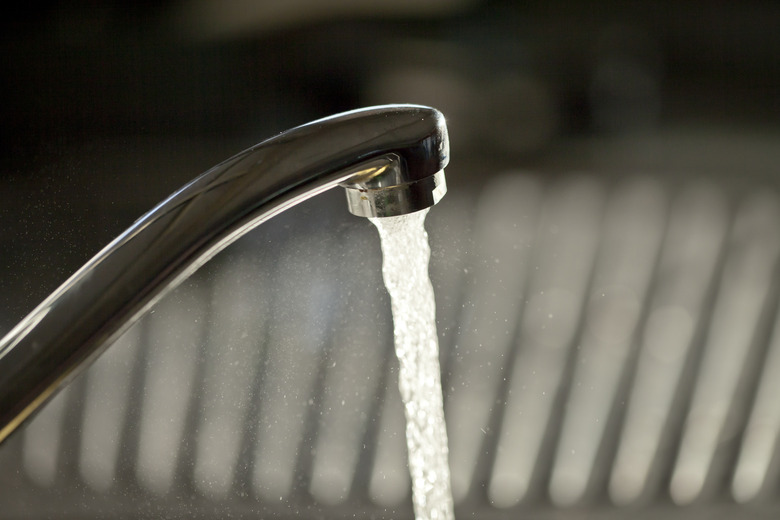How To Bleed A Well Pressure Tank
If you have a well, you probably have a pressure tank somewhere near it. As its name implies, the purpose of the pressure tank is to keep water pressurized to avoid the need for the pump to cycle on whenever your turn on a faucet. There are two types of pressure tanks: hydro-pneumatic ones with a single compartment containing both air and water, and bladder tanks with two compartments separated by a rubber bladder. One compartment stores water and one contains pressurized air. The air pressure is critical to the proper functioning of the pump, and if it's too high, you may have to bleed the tank. This is usually only an issue with bladder tanks. Since air mixes with water in a hydro-pneumatic tank, it's rare for it to have too much air.
Optimal Air Pressure
Optimal Air Pressure
Bladder-style pressure tanks come already charged by the manufacturer, and you'll usually find the factory air pressure displayed on a label on the well air tank. It's usually about 30 psi, but optimally, the air pressure should be 2 psi lower than the cut-in pressure you set for the pump. For example, if you set the pump to come on when the pressure falls to 30 psi, the air pressure in the tank should be 28 psi. That way, there is always a small amount of water pressure in the system.
Not Too High, Not Too Low
Not Too High, Not Too Low
If the air pressure in the pressure tank is lower than its optimal value, the bladder over-extends when the pump fills the tank with water, and the rubber may rupture. The opposite condition — the pressure is too high —could be hazardous; the Schrader valve could rupture or the pump could cycle erratically. You should check the tank pressure periodically and bleed some air out of it if the pressure is more than 2 psi above the pump's cut-in pressure.
Bleeding the Well Pressure Tank
Bleeding the Well Pressure Tank
Determine the cut-in pressure of your pressure pump by noting the pressure on the gauge located on the top of the pump when it cycles on. Write this number down.
Next, turn off the pump; the easiest way to do this is to turn off the breaker in the electrical panel. Open a faucet close to the well pressure tank —a basement laundry faucet is usually best —to empty the tank. Let the water run until it stops. Leave the valve open.
Locate the Schrader valve — it's usually on the top of the tank or on the side near the top. It looks just like the air valve in your car tires. Check the pressure with a car tire pressure gauge and compare it to the cut-in pressure of the pump.
If the pressure is too high, bleed the tank. Press the valve pin in with your finger to release a small amount of air, then check the pressure again. Continue doing this until the pressure is 2 psi lower than the pump's cut-in pressure.
It's worth noting that if you have a hydro-pneumatic tank, you should call a plumber if you suspect it needs to be bled. It probably doesn't, but it takes a pro who understands your particular system to get a reliable assessment and to figure out the best way to do it, if it proves to be necessary.
